Kirsten Leenaars choreographs visual and sound narratives through directing persons and place to create fictionalized realities. The COMP Magazine recently visited Leenaars’ Humboldt Park studio to discuss making art in a new country, how collaboration is essential to being human and why play should be something not lost in adulthood.
You are a transplant from the Netherlands now living and working in Chicago. Can you provide a little background on yourself and how this move to Chicago has impacted your artistic practice?
I was indeed born and raised in the Netherlands, a small crowded country under sea level. Where human nature prevailed and men made land out of water. That sense of potentiality is ingrained in my soul. I was raised with the following paradoxical doctrine: don’t stand out, acting normal is already quite crazy enough…. In addition I grew up believing in Sinterklaas, not Santa Claus. A Turkish Saint on a white horse living in Spain, making an annual trip to my home country by boat. This is how my art making started, crafting traditional Sinterklaas presents, products of tinkering, aimed at giving a beloved a gift with the appearance of something completely different, accompanied by a poem, serving as a mocking form of portraiture. All this is inextricably interwoven with my interest in the wide scope of manifestations of humanness and discovering potential. Early aspirations of becoming a spy, a detective or an anthropologist are still present in my work, but the pleasure of making trumped these ambitions and I turned out to be an artist instead. I am by nature a make believer and an eternal optimist, somehow these qualities have found a more resonant and creative home in the States. I like being able to look at things through the eyes of a foreigner, I need the conflict, diversity and optimism that living here has provided me. My work is perhaps uniquely American in that respect. I think in Chicago I gave myself permission to work against and with the idea of ‘not standing out’ and play more freely as an artist and offer through my work platforms for others to perform and play.
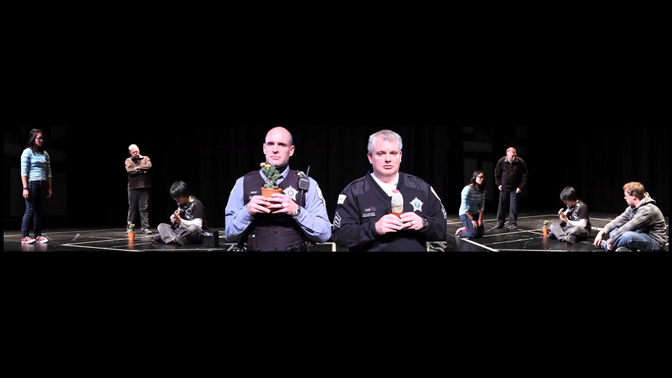
Kirsten Leenaars, Not In Another Place, But This Place… (Happiness), 2014
In looking at your work, I have noticed an intersection between social practices and contemporary aesthetics. There is also a sense of play. Is this a correct analysis? Is there a specific philosophy that ties your investigations and application together?
In the Netherlands there is a strong tradition of both documentary and musical making. These seemingly opposite traditions became my portals to art making and thinking about the nature of portraiture, fostering relationships, and story telling. In addition these traditions made me think about what it means to perform and fictionalize the everyday and people’s real experiences. Various forms of performance, theater, and documentary strategies make up the threads that run through my work. I often look at the work of choreographers Pina Bausch and Bill T Jones, artists Maria Pask and Althea Thauberger, and documentary makers Marjoijn Boonstra, Errol Morris and Studs Terkel. I am interested in how each of them uses personal stories and interactions to tell a common and enlarged story, connecting to the larger reality of which we are all part. In my work I explore the nature of narratives and looks at how we relate to other people and what shapes these relationships. All starting with the acknowledgement that in one way or another we are simply all connected, all human, all in the business of being human with all our flaws, projections, desires, hopes and fears.
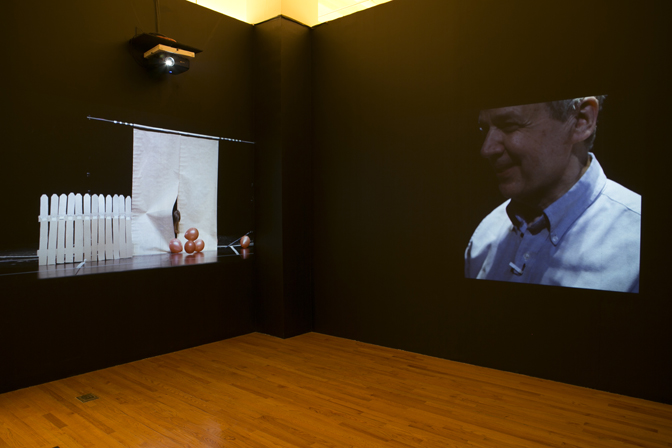
Kirsten Leenaars, Not In Another Place, But This Place… (Happiness), 2014
Collaboration has also been a recurring theme in your oeuvre. Can you discuss the value of this and how you make your selections? Are there any particular projects that best illustrate this approach?
“Man is only completely human when we play”
A quote from Schiller at the end of his 15th letter on the aesthetic education of mankind. As a ‘true’ artist, I did not read these letters and probably am taking this sentence completely out of context. But I very much relate to this. There is agency a play, something we so naturally do as kids, but somehow seem to lose that ability when we have deemed our selves adults. In my work I aim to bring to light a shared humanity, often through humor and play. Play as site of vulnerability and risk-taking, empathy and an open space for alternative modes of representation. Trust is key in creating this space.
Thinking about how to foster trust and this open space really came from my interest in documentary film and photography. I grew up with a father who is an avid amateur photographer. World Press Photo books and The Family of Men were stacked on our shelves. Countless family albums were evidence of this passion. His interest informed my art practice which started with photography. I began trying to articulate this space between my participants and me, and began to define this as a collaborative process.
I think at times of the work as an encounter, just as how you might look at a portrait of a stranger. The portrait becomes a place where difference meets— a place for vulnerability and acceptance. For me it means that in my practice I try to create a space of inclusion where those represented can participate in their own representation.
The past 7 years of my practice I have worked collectively with a variety of communities to examine our ways of being and being represented. The work is articulated in dialogue with my participants. Questions arise in response to a given situation (the death of my grandmother in Folding Within You, Without You), a community (exploring notions of happiness in the Edgewater neighborhood in (Not in Another Place, But This Place…(Happiness)) or site, (producing a soap opera about the museum staff and visitors of the Museum of Contemporary Art, Chicago in On Our Way to Tomorrow). Every project has its own set of considerations for collaboration, depending on the subject matter I want to address and the community I would like to engage. It is never the same. This collective form of making is capital in the production of the work, but it is not the work itself or just a method. I hope that because of my participants and through this collective process, the final work -already peopled- will continue to ask questions of how we are all connected and point to how we are all engaged in this creative endeavor called being human.
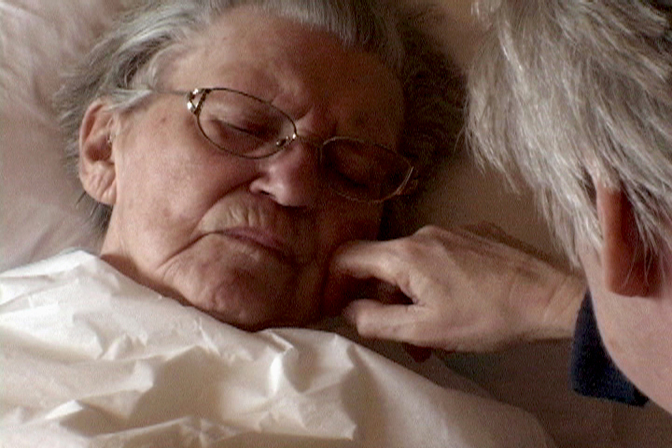
Kirsten Leenaars, Folding Within You, Without You, 2013
You recently did a residency at the Wexner Center for the Arts. What was your focus during this residency? Did this project stem from previous efforts? Perhaps, you can elaborate on the experience?
I was at The Wexner in October and will be going there again in about a week to continue the editing process. I am editing a multi channel sci-fi video piece, The Invasion of the Hairy Blobs – The Conspiracy of Improbabilities. The video was filmed at the Hyde Park Art Center during my residency there as part of ‘Hairy Blob’ exhibition, curated by Adelheid Mers. I worked in every corner of the Hyde Park Art Center to develop this participatory science fiction movie, with staff members as my actors. The roles were created based on their positions at the Center and the conversations I had with them during my stay. The video imagines the Art Center as a tightly-run ship on a mission with an exciting voyage ahead, halted by a group of mysterious furry visitors who seem to take over, making time seem to disappear. It is such a gift to work at the Wexner, to have that focused time to just look at your footage over and over again and to piece your work together second by second. It is also quite wonderful to work with an editor, and have that second pair of eyes and someone who thinks with you. During my first visit it was too early in my process to really work with Paul – the Wexner assigns you an editor to work with as part of the residency – but now on my return visit he will be fully part of the process. Can’t wait.
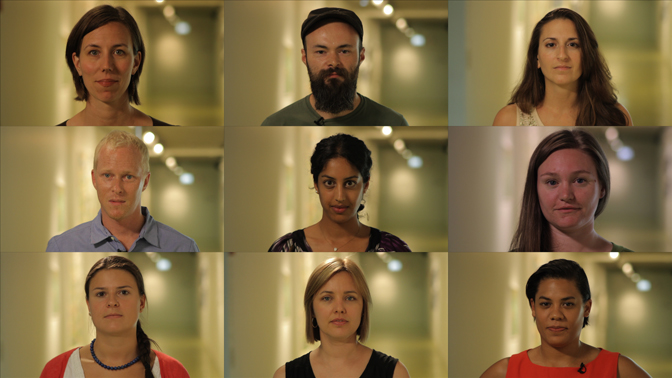
Kirsten Leenaars, The Invasion of the Hairy Blobs, 2015
What are you working upon now? Are there any future projects you plan to present in Chicago?
A new video work will be part of Rafael Vera’s solo show: The Moments Between, curated by Jessica Cochran at the A&D Gallery (Columbia College), opening on January 15.
The week after I will be in Mexico City, performing new work with poets Joel Craig and Luis Felipe Fabre as part of the Lit&Luz festival.
And for the Spring I am developing Notes on Empty Chairs, a series of 3 in-gallery performances at the Museum of Contemporary Art in Chicago – as part of their ‘Live’ programming on Tuesdays – exploring themes of empathy, community, and remembrance in response to the exhibition Doris Salcedo which will open in February 2015 at the MCA. Working with local political organizations, activists and with victims of violence, I will locate some of the issues Salcedo addresses in her work in Chicago.
On March 19th my solo show at DCAC, Washington DC will open where I will show Not in Another Place, But This Place…(Happiness) and additional new work produced in DC.
Ongoing: working on a experimental documentary/romantic comedy revolving around the USPS original motto:
Messenger of Sympathy and Love
Servant of Parted Friends
Consoler of the Lonely
Bond of the Scattered Family
Enlarger of the Common Life
Carrier of News and Knowledge
Instrument of Trade and Industry
Promoter of Mutual Acquaintance
Of Peace and of Goodwill Among Men and Nations.
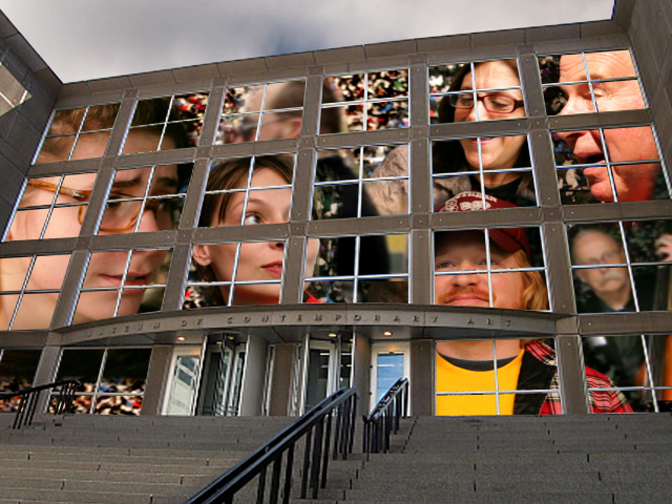
Kirsten Leenaars, On Our Way to Tomorrow, 2011
Kirsten Leenaars has exhibited her work at the Museum of Contemporary Art (Chicago), The Hyde Park Art Center (Chicago), Hatch (Detroit), Ghadjapuri Kino Klub (Rotterdam), DePaul Museum of Art (Chicago), Van Abbe Museum/St Anna ziekenhuis (the Netherlands) and numerous other venues in the United States and Europe. When not organizing elaborate tableaux, Kirsten enjoys washing her dishes.
To view additional work by Kirsten Leenaars, please visit:
Kirsten Leenaars: https://kirstenleenaars.wordpress.com/
Kirsten Leenaars: Aesthetics and Social Practice: http://blogs.colum.edu/caa/kirsten-leenaars-aesthetics-and-social-practice/
MCA: Boulevard Dreamers: http://www2.mcachicago.org/event/mca-live-boulevard-dreamers/
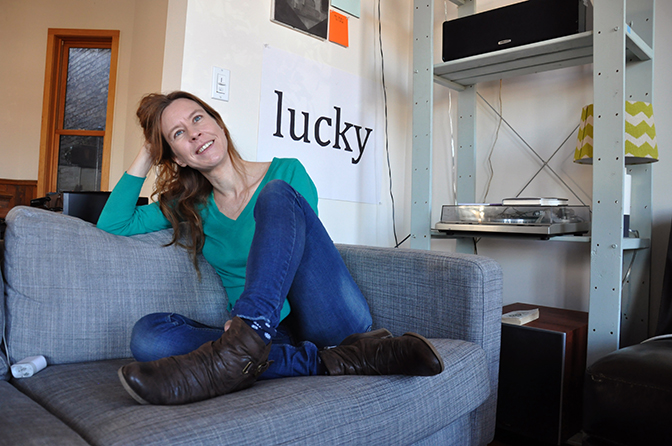
Kirsten Leenaars, new media artist, Chicago, IL, 2014
Interview and portrait by Chester Alamo-Costello


